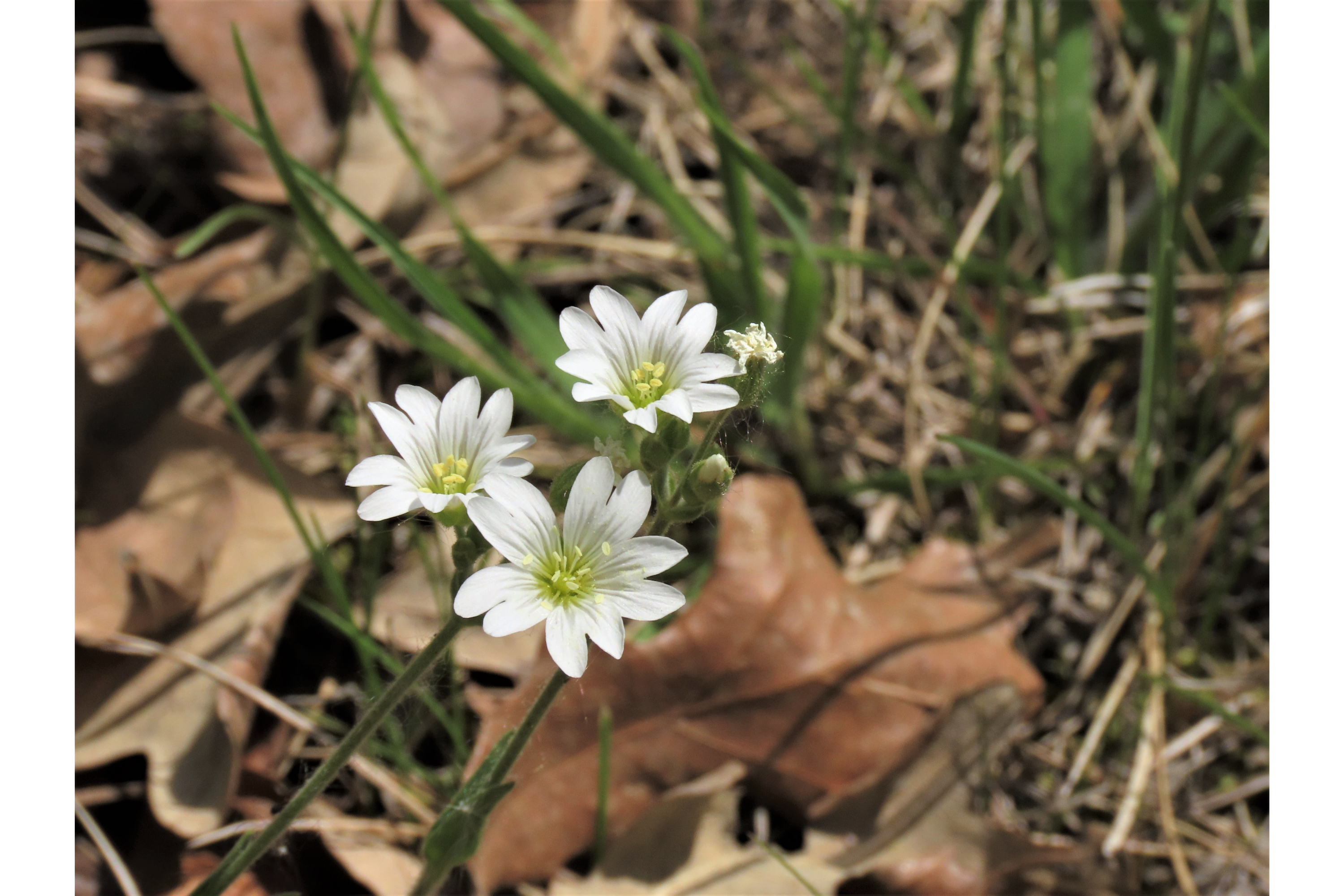Spring draba
(Draba verna)

Description
Draba verna (syn. Erophila verna) the spring draba, shadflower, nailwort, common whitlowgrass, vernal whitlow grass, early witlow grass or whitlow-grass is a species of plant in the mustard family, Brassicaceae. D. verna has the unique trait of bifid petals, not found anywhere else in the genus Draba. The plant consists of a few flowers with branching stems and the leaves are focused around the base of the plant. The seeds are located in the flower but are not equipped with any sort of wind dispersal adaptation. The native range of Draba verna includes parts of Great Britain and Central Europe, specifically parts of Denmark, The Netherlands, and Belgium and Hungary. It is postulated that Draba verna was brought to North America when the European colonizers came to the New World. Draba verna originated in Europe and naturalized in the United States, where it has been found mostly east of the Mississippi River and west of the Rocky Mountains. Draba verna has been found in the high Semien Mountains of Ethiopia as well as in the Bale Mountains, which is a unique location for this species to grow since it is reasonably further south and in a more tropical region than the Draba verna growing in the United States. It is found in Chile and Patagonia, Argentina as well and is predicted to have been brought from Europe by colonizers. It was first recorded in 1901. It has also been found in Canada, specifically recorded in Nova Scotia, New Brunswick, British Columbia, Ontario, and Quebec. Draba verna in this region is presumed to have been dispersed from Europe partially by campers and hikers since this species is typically considered a weed found in camping grounds or open fields. Regions of Great Britain and surrounding islands, most of the mainland of Europe, as displayed in the image on the right, are other places D. verna has been found. In the continent of Asia, D. verna has been recorded in Kazakhstan, Uzbekistan, and Kyrgyzstan. In the northeastern United States, Draba verna typically flowers in early spring, March–May. The seeds fall to the soil and remain there until germination in September or October. Germination doesn't occur in the summer months because the seeds are dormant and they need about 3 months to after-ripen before they can germinate successfully. Draba verna typically reproduces by self-pollination or selfing in mid- to late April when the buds begin to flower and will disperse when the seeds are mature.
Taxonomic tree:







